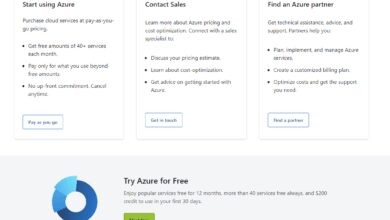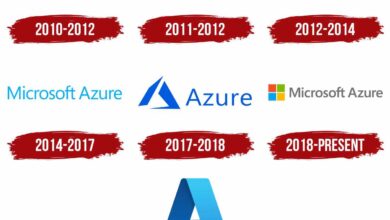Azure Standard: 7 Powerful Insights You Must Know in 2024
Welcome to the ultimate guide on Azure Standard—a cornerstone of Microsoft’s cloud ecosystem. Whether you’re a developer, IT pro, or business leader, understanding Azure Standard unlocks scalability, reliability, and innovation in the cloud. Let’s dive deep into what makes it indispensable.
What Is Azure Standard? A Foundational Overview

The term “Azure Standard” isn’t a single product but rather a broad classification used across Microsoft Azure services to denote baseline tiers that offer balanced performance, availability, and cost. It’s often contrasted with Premium and Basic tiers across various Azure offerings like virtual machines, storage, networking, and databases.
Defining Azure Standard Across Service Categories
Microsoft uses the “Standard” designation to indicate a service tier that provides enterprise-grade features without the highest-end capabilities reserved for Premium SKUs. For example:
- Virtual Machines (VMs): Azure Standard VMs include general-purpose, compute-optimized, and memory-intensive instances with SLA-backed uptime.
- Storage: Standard Storage (e.g., Standard_LRS) offers durable blob, file, and disk storage with lower cost than Premium SSDs.
- Networking: Azure Standard Load Balancer and Standard Public IP provide enhanced features like zone redundancy and better integration with other services.
- App Services: The Standard plan supports auto-scaling, custom domains, and SSL, making it ideal for production workloads.
These tiers are designed for production environments where reliability and moderate performance are required without the premium price tag.
How Azure Standard Differs from Basic and Premium Tiers
Understanding the differences between Basic, Standard, and Premium is crucial for cost optimization and performance alignment.
- Basic: Intended for dev/test scenarios, lacks auto-scaling, advanced monitoring, and high availability features.
- Standard: Designed for production use, includes SLAs (typically 99.95%), auto-scaling, and integration with Azure Monitor and Backup.
- Premium: Offers the highest performance, lowest latency, advanced security, and additional features like geo-redundant backups and faster disks.
“Azure Standard strikes the perfect balance between cost and capability—ideal for businesses scaling into the cloud without overcommitting resources.” — Microsoft Azure Architecture Center
Azure Standard Virtual Machines: Powering Scalable Workloads
One of the most widely used applications of the azure standard concept is in Azure Virtual Machines. These VMs are foundational for hosting applications, databases, and backend systems in the cloud.
Types of Azure Standard VMs
Azure offers several families of Standard VMs tailored to different workload requirements:
- D-Series: General-purpose VMs with a balance of CPU, memory, and temporary storage. Ideal for web servers, small databases, and development environments.
- E-Series: Memory-optimized VMs suited for in-memory databases like SAP HANA and large-scale enterprise applications.
- F-Series: Compute-optimized VMs that deliver high CPU performance for batch processing and gaming servers.
- DS/ES/FS-Series: These are the SSD-backed versions of D, E, and F series, offering faster disk performance and better IOPS.
Each of these VM types comes with a 99.9% SLA when deployed in an availability set or zone-redundant configuration.
Pricing and Cost Management for Standard VMs
Cost is a major consideration when selecting azure standard VMs. Microsoft offers flexible pricing models:
- Pay-as-you-go: Most flexible, billed per second with no commitment.
- Reserved Instances: Save up to 72% by committing to 1- or 3-year terms.
- Spot VMs: Use unused capacity at up to 90% discount—ideal for fault-tolerant, non-critical workloads.
Tools like the Azure Pricing Calculator help estimate costs based on region, instance size, and usage patterns.
Azure Standard Storage: Reliable and Cost-Effective Data Handling
Storage is a critical component of any cloud infrastructure, and azure standard storage solutions provide a robust foundation for data persistence, backup, and retrieval.
Types of Standard Storage in Azure
Azure offers multiple Standard storage options depending on performance, durability, and access frequency needs:
- Standard HDD (Standard_LRS): Low-cost magnetic storage for infrequently accessed data.
- Standard SSD (StandardSSD_LRS): Balanced performance for dev/test environments and medium I/O applications.
- Standard Blob Storage: Designed for unstructured data like images, videos, and logs.
- Standard File Shares: Cloud-based SMB/NFS shares for lift-and-shift scenarios.
All Standard storage types support replication options such as Locally Redundant Storage (LRS), Zone-Redundant Storage (ZRS), and Geo-Redundant Storage (GRS).
Use Cases for Azure Standard Storage
Organizations leverage Standard storage in various scenarios:
- Backup and Archiving: Long-term retention of VM backups using Azure Backup with Standard storage backend.
- Content Delivery: Hosting static websites or media files served via Azure CDN.
- Hybrid Cloud Integration: Using Azure File Sync to extend on-premises file servers to the cloud.
- Disaster Recovery: Storing replicated VM disks in Standard storage for cost-efficient DR strategies.
For more details, visit Microsoft’s official storage redundancy documentation.
Azure Standard Networking: Building Secure and Scalable Connections
Networking is the backbone of cloud connectivity, and azure standard networking services ensure reliable, secure, and high-performance communication between resources.
Key Components of Azure Standard Networking
The Standard tier in Azure networking includes several critical services:
- Standard Load Balancer: Provides advanced load balancing with support for outbound rules, zone redundancy, and integration with Network Security Groups (NSGs).
- Standard Public IP Address: Enables public connectivity with support for zone redundancy and static allocation.
- Virtual Network (VNet): The foundation for private networking in Azure, allowing segmentation and secure communication.
- Azure DNS: Hosted DNS service with Standard tier offering high availability and low latency.
These components are essential for building multi-tier applications, microservices architectures, and hybrid cloud setups.
Security and Performance Benefits of Standard Networking
Compared to Basic networking, the Standard tier offers significant advantages:
- Enhanced Security: Integration with NSGs, Application Security Groups (ASGs), and Azure Firewall.
- High Availability: Zone-redundant configurations ensure uptime even during regional failures.
- Better Observability: Built-in metrics and logs via Azure Monitor for troubleshooting and optimization.
- Outbound Connectivity Control: Customizable SNAT ports and outbound rules for predictable egress behavior.
For enterprise-grade deployments, Standard networking is not just recommended—it’s required.
Azure Standard App Service: Hosting Web Apps with Confidence
For developers building web applications, APIs, or serverless functions, azure standard App Service is a go-to platform for production-grade hosting.
Features of the Standard App Service Plan
The Standard tier of Azure App Service unlocks capabilities essential for real-world applications:
- Auto-Scaling: Scale out based on CPU, memory, or custom metrics; scale in during low traffic.
- Custom Domains and SSL: Bind your own domain and enable HTTPS with free or custom certificates.
- Deployment Slots: Use staging slots for blue-green deployments and A/B testing.
- Backup and Restore: Automated backups with retention policies up to 10 days.
- Application Insights Integration: Monitor performance, track exceptions, and analyze user behavior.
This makes the Standard plan ideal for SaaS applications, e-commerce platforms, and internal business portals.
Cost vs. Value: Why Choose Standard Over Basic?
While the Basic tier is cheaper, it lacks critical features:
- No auto-scaling—manual scaling only.
- No deployment slots—increasing risk during updates.
- Limited monitoring and no integration with Application Insights.
- No backup/restore functionality.
For any application beyond proof-of-concept, the azure standard App Service plan delivers superior ROI through automation, reliability, and operational efficiency.
Azure Standard for Databases: Reliable Data Management
Database services in Azure also follow the tiered model, with azure standard options providing a solid middle ground for performance and cost.
Standard Tier in Azure SQL Database
Azure SQL Database offers a Standard tier that supports most transactional workloads:
- Service Levels: S0, S1, S2, S3 with increasing vCores, memory, and IOPS.
- Max Database Size: Up to 1 TB (depending on service objective).
- High Availability: Built-in replication with 99.99% availability SLA.
- Automatic Tuning: Index management and performance recommendations.
It’s perfect for line-of-business applications, CRM systems, and mid-sized SaaS platforms.
Standard Options in Other Azure Database Services
Other managed database services also offer Standard equivalents:
- Azure Database for MySQL/PostgreSQL: General Purpose tier (equivalent to Standard) balances compute and memory for web apps.
- Azure Cosmos DB: While Cosmos uses a different pricing model (RU/s), its Standard consistency level offers predictable performance at lower cost than Strong consistency.
- Azure Cache for Redis: Standard tier provides replication, persistence, and 99.9% SLA—ideal for session caching and microservices.
Choosing the right database tier ensures optimal performance without overspending.
Best Practices for Using Azure Standard Services
Maximizing the value of azure standard services requires strategic planning and operational discipline.
Right-Sizing Your Resources
One of the most common pitfalls is over-provisioning. Use Azure Monitor and Advisor to:
- Analyze CPU, memory, and disk usage trends.
- Identify underutilized VMs or databases.
- Right-size instances to match actual workload demands.
For example, downgrading from a Premium SSD to a Standard SSD can reduce disk costs by 40–60% with minimal performance impact for non-I/O-intensive apps.
Implementing Cost Optimization Strategies
To get the most out of azure standard services:
- Use Reserved Instances: Commit to 1- or 3-year terms for VMs, SQL databases, and other eligible services.
- Enable Auto-Shutdown: For dev/test VMs, schedule shutdowns outside business hours.
- Leverage Azure Hybrid Benefit: Use existing Windows Server or SQL Server licenses to reduce costs by up to 40%.
- Monitor with Azure Cost Management: Set budgets, track spending, and receive alerts before exceeding limits.
These practices ensure you stay within budget while maintaining performance.
Ensuring Security and Compliance
Even in Standard tiers, security should never be compromised:
- Enable Azure Defender for threat protection across VMs, storage, and databases.
- Use Role-Based Access Control (RBAC) to enforce least-privilege access.
- Apply Network Security Groups to restrict traffic to only necessary ports.
- Regularly audit configurations using Azure Policy and Security Center.
Microsoft’s compliance offerings cover standards like GDPR, HIPAA, ISO 27001, and SOC 2—available even in Standard-tier services.
Migrating to Azure Standard: A Step-by-Step Guide
For organizations moving from on-premises or other clouds, adopting azure standard services is a strategic first step.
Assessment and Planning Phase
Before migration:
- Use Azure Migrate to discover and assess on-premises servers, applications, and dependencies.
- Evaluate performance requirements to select appropriate Standard-tier VMs or databases.
- Estimate costs using the Azure Migrate tool.
This phase minimizes surprises during and after migration.
Execution and Optimization
Once assessed:
- Replicate VMs using Azure Site Recovery (ASR) to Standard storage.
- Migrate databases using Azure Database Migration Service (DMS).
- Test failover and performance in the cloud environment.
- Optimize post-migration by enabling auto-scaling, monitoring, and backup policies.
Many enterprises adopt a phased approach—starting with dev/test, then moving to production using azure standard infrastructure.
Future Trends: How Azure Standard Is Evolving
The landscape of azure standard services is continuously evolving with new features, pricing models, and integrations.
Integration with AI and Machine Learning
Microsoft is embedding AI into Standard-tier services:
- Azure App Service: AI-powered anomaly detection in Application Insights.
- Azure SQL: Intelligent query processing and automatic tuning.
- Azure Storage: Predictive analytics for capacity planning.
These enhancements make Standard services smarter without requiring Premium upgrades.
Sustainability and Green Cloud Initiatives
Microsoft is committed to sustainability, and azure standard services play a role:
- Energy-efficient data centers powered by renewable energy.
- Carbon-aware scheduling in Azure Kubernetes Service (AKS).
- Tools like Azure Sustainability Calculator help estimate environmental impact.
Choosing Standard over over-provisioned Premium resources also reduces energy waste.
Edge and Hybrid Cloud Expansion
As edge computing grows, Azure Standard services are being adapted for hybrid scenarios:
- Azure Stack HCI: Brings Azure-consistent infrastructure to on-premises with Standard-like VM and storage options.
- Azure Arc: Extend management of Standard resources across multi-cloud and edge environments.
This ensures consistency whether workloads run in the cloud or at the edge.
What is Azure Standard?
Azure Standard refers to a category of service tiers in Microsoft Azure that offer a balanced mix of performance, reliability, and cost. It’s used across VMs, storage, networking, databases, and app services for production workloads that don’t require the highest-end capabilities of Premium tiers.
Is Azure Standard suitable for production environments?
Yes, Azure Standard is specifically designed for production use. It includes SLAs (typically 99.9% or higher), auto-scaling, high availability, and integration with monitoring and security tools—making it ideal for business-critical applications.
How much does Azure Standard cost?
Pricing varies by service. For example, a Standard_D2s_v3 VM starts at around $0.11/hour, while Standard Storage costs $0.02/GB/month. Use the Azure Pricing Calculator for accurate estimates based on your region and usage.
Can I upgrade from Basic to Azure Standard?
Yes, most Azure services allow seamless upgrades from Basic to Standard tiers without downtime. For example, you can scale up an App Service plan or change a VM size with minimal disruption.
Does Azure Standard include backup and disaster recovery?
Yes, Standard-tier services support backup and DR features. For instance, Azure VMs can be backed up using Azure Backup, and databases support geo-replication and point-in-time restore—all configurable within the Standard tier.
In conclusion, azure standard is not just a service tier—it’s a strategic choice for organizations seeking reliable, scalable, and cost-effective cloud infrastructure. From virtual machines and storage to networking and databases, the Standard tier delivers enterprise-grade capabilities without the premium price. By understanding its features, use cases, and best practices, businesses can optimize performance, ensure security, and future-proof their cloud investments. As Microsoft continues to innovate, the role of Azure Standard will only grow—supporting AI, sustainability, and hybrid cloud evolution. Whether you’re migrating, building new apps, or optimizing costs, Azure Standard remains a powerful foundation for success in the cloud era.
Recommended for you 👇
Further Reading:









